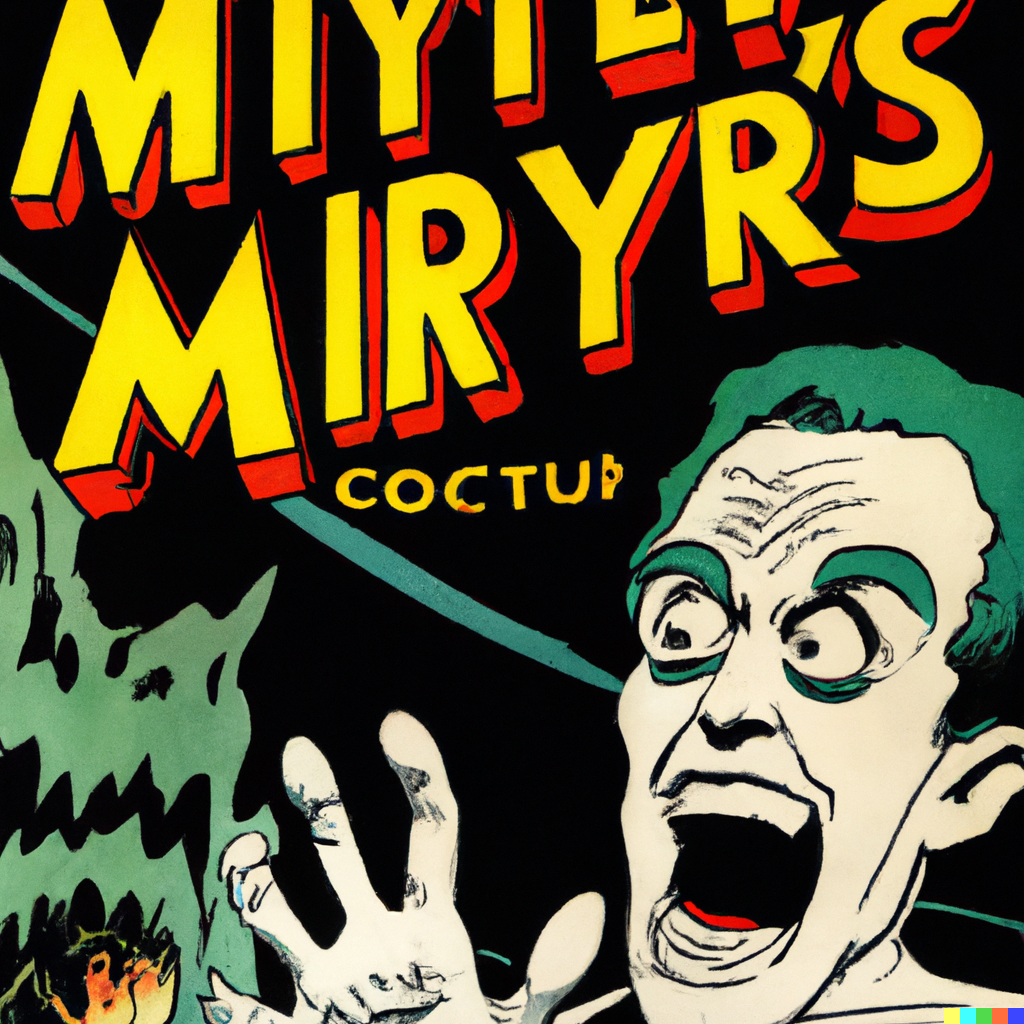I always thought people had to pay for every update and upgrade, this company being apple, but just yesterday I found out the upgrade from 10 to 11 is free (don’t know about an upgrade from 11 to 12, are upgrades to the newest and still supported macOS version free?)
What other applications do macOS users get for free?
Do macOS users get more free apps if they create an account with apple?
I’ve understood adobe and MS-Office are active at the mac app store. How does apple’s business model work? Do I buy the app, pay once and get free updates and upgrades indefinitely? or do I have to pay them a monthly fee?
Can LibreOffice be used on a macOS?
Is there an emulator to use ubuntu or windows based apps on a mac? Are they free of charge?
Are upgrades to the newest and still supported macOS version free?
All of Apple’s macOS updates are free, and have been since 2013. They have exactly one major macOS update per year, with smaller bugfix releases interspersed. However, Apple drops official support for their computers after about 5 or 6 years. This is exactly the same as their update system for iOS and their other platforms. Apple is able to provide updates for free due to income from hardware sales, which Windows obviously isn’t in the same position to do.
macOS 14 Sonoma (the latest version) is officially supported for all Macs made since 2018. You can still install modern versions of macOS on unsupported devices, but you have to use third-party tools such as Open Core Legacy Patcher.
What other applications do macOS users get for free?
Apple has quite a few free apps, many of which come pre-installed with macOS. These include Safari (web browser), Messages, FaceTime (video-calling app), Maps, Pages (Apple’s version of MS Word) and more. Here’s a full list. You may recognise many of these from iOS. Controversially, most of these pre-installed apps receive updates with the OS, and can’t be updated without also updating the OS. Therefore, all of these apps receive free updates for as long as Apple updates the OS.
Apple also sells a handful of paid apps for a one-time charge, the most well-known of which is Final Cut Pro. They also have subscription services for some of their other apps, such as Apple Music.
Do macOS users get more free apps if they create an account with apple?
Some features require an “Apple ID” (Apple account). Some examples:
- Purchasing apps from the App Store or buying one of Apple’s subscriptions. Free apps can be downloaded without an Apple ID.
- Access to iMessage, which is Apple’s messaging protocol. It’s somewhat similar to the RTS protocol feature-wise, but it’s a closed system (in true Apple fashion). If you don’t sign in, you can still text others via SMS/MMS.
- Access to AirDrop, which allows you to send files to nearby Apple devices via BlueTooth.
- The ability to send and receive texts and calls from your Mac, if you have an iPhone.
I’ve understood adobe and MS-Office are active at the mac app store. How does apple’s business model work?
Some apps are available on the App Store, and others are downloaded from the developer’s website. Most developers make their apps available from the web rather than the App Store, because Apple charges money to offer apps on the App Store. It costs $99 per year, plus 15-30% of the money made from people buying the app or from in-app purchases.
Microsoft Office apps are available from the App Store, but you have to download most Adobe apps from Adobe’s website. As mentioned above, this is to avoid the 15% cut that Apple would probably take from Adobe’s subscription revenue if it was available on the App Store.
Do I buy the app, pay once and get free updates and upgrades indefinitely? or do I have to pay them a monthly fee?
Apps are either free, have a one-time charge, or are subscription-based. Apps downloaded from the App Store are updated automatically, and most will give you free updates forever. The developer gets to choose which OS versions they support, and can publish updates for your device even after that device stops receiving OS updates from Apple.
Can LibreOffice be used on a macOS?
I don’t use LibreOffice personally, but their website says it’s supported. Another alternative is Apple’s equivalent of MS Office, which is free and supports MS file types.
Is there an emulator to use ubuntu or windows based apps on a mac? Are they free of charge?
There are emulators, yes. Wine is a free popular emulator for Windows apps. You may have used Wine on Linux before. Linux and macOS share some similarities on the technical side, because they are both based on UNIX (unlike Windows).
I personally use Whisky, which is Wine-based and has a nice GUI. It should be noted that not all windows apps will work through Wine, but I’ve had success with many apps and even some games (most recently Lethal Company, which I was able to run at a stable 120fps using Whisky).
Intead of emulating a single app using Wine, you can also emulate Windows entirely if you want to. I’ve used Virtual Box to do this in the past. Parallels Desktop is a sleeker alternative that many people use, but it’s subscription based. I personally haven’t tried it.
On older Macs (that have Intel chips) you can install Windows directly alongside macOS. Modern Macs (ones with Apple Silicon chips) can’t run Windows natively, but there is a version of Linux (Asahi Linux) that you can install.
I hope this answers your questions :)
Wine Is Not an Emulator
love me a good recursive acronym
One correction, you can use Airdrop on a Mac without an AppleID. I currently have a Mac for work where I’m not allowed to use an AppleID, but can still use Airdrop. Also Airdrop uses both Bluetooth and a direct WIFI connection.
Great detailed answer. One pedantic nitpick is the Apple typically supports Macs longer then 5-6 years, with the operating system getting security patches for a few years after the last one was released.
Their support cycle has been shorter lately because they seem pretty hell bent on phasing out Intel Macs.
I have used OpenOffice on Macs.
Also there are some free Apple apps that aren’t installed by default. (GarageBand and one for making gifs)
Updates to macOS are free; the hardware sales make that possible.
Updates to third-party apps like MS Office and Adobe are entirely at the discretion of that vendor (both of those are likely subscription-only at this point).
LibreOffice is available for macOS, yes.
I think Oracle’s VirtualBox is still free for emulation. You can also use Boot Camp to install Windows natively for dual-booting.
You can also use Boot Camp to install Windows natively for dual-booting.
On Intel-based Macs, yes. Apple silicon does not support Boot Camp.
On Apple Silicon Macs, you can set up Asahi(Fedora) Linux to dual boot. Or you can you use something like Parallels as a paid alternative to bootcamp.
Ah, hadn’t thought of that, good call. I buy old Macs and fix them up.
If you don’t do anythithing very specific, iWork is just fine to and has been free for the last 11 Years. And most people probably don’t use Adobe’s Creative Suite (that’s paid on Windows just the same anyway)
VirtualBox still does not support Apple Silicon well. UTM is a great free and open source alternative.
Instead of worrying about if you can emulate Ubuntu, I would suggest you should research UNIX, and in particular how macOS is certified UNIX so “under the hood” on the command line it works a lot like Linux since Linux is UNIX inspired (GNU literally stands for Gnu’s Not UNIX).
Yeah and you can even have a Linux like experience with nix.
But it’s a lot like Linux except when it isn’t… There’s a lot of little differences. And things like cross compiling from MacOs to non-Mach targets really sucks because it seems like often people do not really maintain such a usecase.
A lot of devs have abandoned the idea of supporting or using Mac because of Xcode and difficulty cross-compiling.
Why would XCode be a problem? But I fully understand that for FOSS projects - especially without easy&cheap Mac CI solutions you’re back in the 90s of manual testing etc…
Oh I absolutely agree that it’s really bad, but for most (non-ios) things you Don have to use it?
Nope. You have to use it for MacOS too if you want it to be properly native and integrate fully, without doing it this way you’re putting the Mac version at a disadvantage. It’s why Heartbound only natively supports Windows & Linux. Jason T. Hall (Pirate Software) has never been involved in developing IOS games.
Yeah we’re talking about different kinds of software. I’m mainly talking about CLI software and it seems like I didn’t notice that Jetbrains killed Appcode…
Here is an alternative Piped link(s):
Piped is a privacy-respecting open-source alternative frontend to YouTube.
I’m open-source; check me out at GitHub.
MacOS is a BSD variant, right? BSD is basically Linux anyway - and it’s also where Windows stole their networking code from (specifically, it’s why Windows has a directory called
etcwith a file in it calledhosts)
Unlike Microsoft, Apple doesn’t use software activation and things like “The OEM license is married to the motherboard”. If you have an Apple computer, you can wipe MacOS, install Linux, and then download MacOS for free from Apple into your emulator software on Linux and Apple would have no reason to bother you. And OS updates are for free. Things are different when you use non Apple hardware and install MacOS.
Morning,
Os upgrades are free since like 2012. There’s a bunch of software that comes with the os that’s free and a boatload of software in the App Store that’s free.
If you make an apple id you can use stuff that needs it like messages, icloud etc. without an apple id those programs are on your computer but they don’t work fully. An apple id is required to use the App Store I think, so I guess that’s an example of software you need an apple id to get.
There’s both buy once, cry once versions of office and saas versions. I think adobe is fully saas now.
Libre office works fine on a mac.
You don’t need to use an emulator because there are systems like homebrew to let you natively run lots of free software on a mac. If you do want to run a vm, there are paid and free options.
Did you ever get that mbp 11,1 upgraded?
I think most other comments cover the important bits, so I will try not to repeat them. I have been using a M1 MacBook Air since they came out and I love it. The battery life is great, the desktop environment is very clean and unobtrusive, and I don’t have to fight with it very often. I use brew to install my FOSS stuff. I certainly don’t pay for anything extra. Only major complaint is the way they do the windowing. Don’t know the right word for it. Maximize, minimize, “alt-tab”, and snapping to half/quarter/etc like Windows isn’t great in comparison and pretty lacking. Thankfully there are 3rd party applications such as Rectangle and AltTab that make it better. I haven’t used Stage Manager as it doesn’t fit my workflow.
The only other OSs I use at home are Debian and Arch. Those cover any additional gaming I might want to do, but they are primarily servers. I use GeForce Now for everything else.
I tried a W11 on a VM and I cannot describe the amount of hatred I have for it. I feel like I am fighting with the OS at every turn. I don’t really have a problem with W10 from a generic user experience, other than that advertising BS they keep trying to sneak in.
100% all of this
OSX for work, Ubuntu at home for side projects and gaming.
deleted by creator
I stopped updating my MBP beyong MacOS 10 but all of the updates before that were free. I’ve never heard of someone having to pay for OS updates. Android and iOS updates are free aswell so why wouldn’t they be for Mac?
Most apps that you can get for free on Windows you’re getting free on Mac aswell. And if not that specific app then there’s probably an equivalent one for Mac. I don’t have any Apple accounts and I don’t use the App Store so I don’t know about any of that but you can just download apps with the browser/torrents like on Windows too which is what I’m doing. I don’t want to lock myself into Apple’s ecosystem because I might choose to switch brands later so that’s why I prefer 3rd party apps. It’s why I switched from Final Cut to Davinci Resolve aswell.
LibreOffice works just fine. It’s what I’m using aswell.
Each new version of OS X up to Mountain Lion (2012) was a paid upgrade.
That sounds right. I think I remember paying for iWork back then too.
I even once remember having to pay to update my iPod Touch. iOS 4 in 2010 was the first free update for iPods.
I don’t have a mac but I do know some of the history as I used to: macOS used to be around $130 but macOS Snow Leopard (2009), Lion (2011) and Mountain Lion (2012) were around $20-$30. Since Mavericks (2013) onwards it has been free.
Libreoffice is available, you can install any application you want on a mac provided it’s built for macOS, just like you can on Windows and Linux. You don’t have to install it through the Store either, you can just download it from wherever it is available and install it.
Business model for the mac is that Apple sells hardware, they also have a few applications one can buy such as Final Cut Pro.
The business model for application developers is up to them.
There are tools/package managers for compiling, installing, and upgrading open-source software on a mac, MacPorts and Homebrew.
You can’t run AMD64 Windows applications but there are both free and paid virtual machines (Parallels, UTM) that can run Ubuntu for Aarch64 and Windows Aarch64 in a VM. Funny enough ARM Windows has a translation layer so it can run AMD64 applications. Don’t expect great graphical performance running Windows in a VM. You might also be able to run older AMD64 operating systems (Windows 7) within UTM but it’ll be slow.
I have Libre Office on my Mac. Emulators are a problem though because I have the M1 processor. Virtual box doesn’t support the M1. There are free apps available, just Google for them like you probably do now for whatever OS you have. Use home brew package manager to make it easy to manage.
Things that drive me nuts on Macs:
- The close, maximize, minimize buttons are on the other side compared to any other OS I’ve used, and can’t be changed.
- No built in window snapping. I paid for an app that does.
- Minimizing windows takes them out of the rotation when “alt-tabbing”
- shortcut keys are a pain, apple+c apple+v is not what my fingers are trained for. I remapped the shortcuts but that’s hit it miss depending on the app I’m in. Home goes to the top of the page.
@dingdongmetacarples @vestmoria interesting. I love command+c and command+v and find windows cntrl+c really annoying. Using my thumb to hit the command key on mac is just so much more ergonomic. The thumb based keyboard commands are honestly my favorite part of macOS
Yea it’s just what I’m used to, not really a bad thing. I just wish the remapping worked universally really.
I probably have no business with this question because I don’t use MacOS (much), but I’ve noticed a few things.
Updates
Updates are free, but because they only support so many years of hardware, you’ll have to eventually replace your old Mac with a new one.
Security updates are actually really important.
“Eventually” probably means a Mac will continue getting 6-7 years of support after it’s produced, not when you buy it. And Apple tends to sell models for a while.
Example: if you buy a brand new 2021 MacBook Pro, expect 3 years of support.
Macs introduced between 2009 and 2015 could expect to receive seven or eight years of macOS updates—that is, new major versions with new features, like Ventura or Sonoma—plus another two years of security-only updates that fix vulnerabilities and keep Safari up to date. Macs released in 2016 and 2017 are only receiving about six years’ worth of macOS updates, plus another two years of security updates. That’s about a two-year drop, compared to most Macs released between 2009 and 2013.
Apps and stores
MacOS users do get more free first-party (Apple-made) apps with more accolades than typical Windows users do. But the third party landscape has less selection and more price tags than Windows alternatives; a smaller platform means there will be fewer developers, after all.
The App Store on MacOS works similarly to the Windows (or really any other) one. That means apps can be free, paid, have monthly subscriptions, or be removed by either Apple or the developer at any time, for almost any reason, with probably no recourse for you.
Apple has been super scummy about their iOS app store, but their desktop app store is totally optional and thus not as scummy.
Open Source
The open source community is actually pretty decent about porting their software to MacOS. It’s popular for developers
LibreOffice does work on Macs.
As does VirtualBox for emulation. There are probably better emulation solutions for Macs, but I haven’t recently looked… Parallels used to be a big deal, and Windows compatibility has always been important to some extent.












